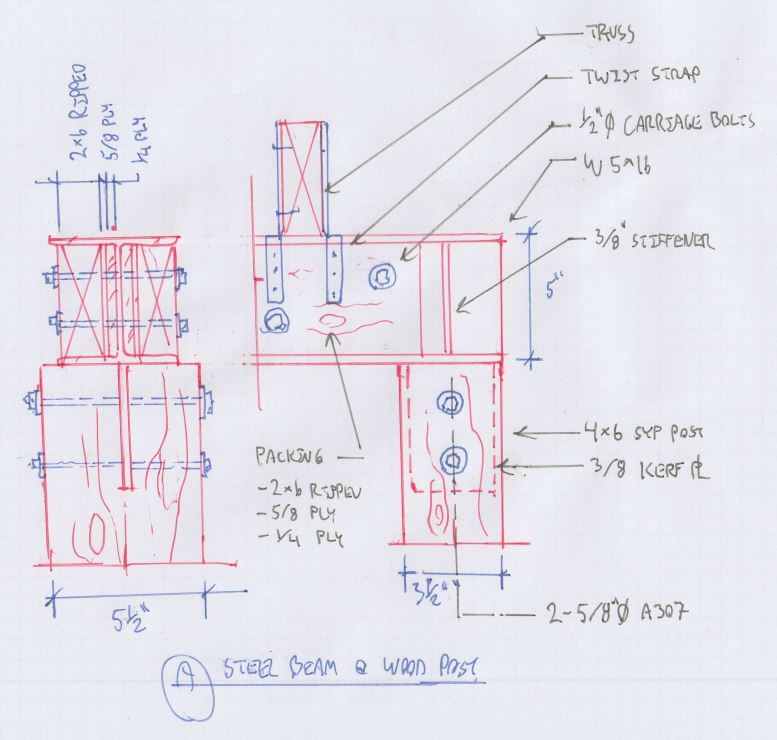kmart30
Structural
- Apr 28, 2016
- 183
I have a few wood trusses bearing on a steel beam that is supported by wood posts. Everything is sized accordingly for gravity loads but I do have wind uplift loads from the trusses. Im trying to figure out the best and easiest (to construct) connections for the trusses and wood columns to the steel beam. I was thinking a combination of bolts, angles, plates, and maybe some welding but I would like to stay away from welds if possible. Any suggestions here?


![[ponder] [ponder] [ponder]](/data/assets/smilies/ponder.gif)